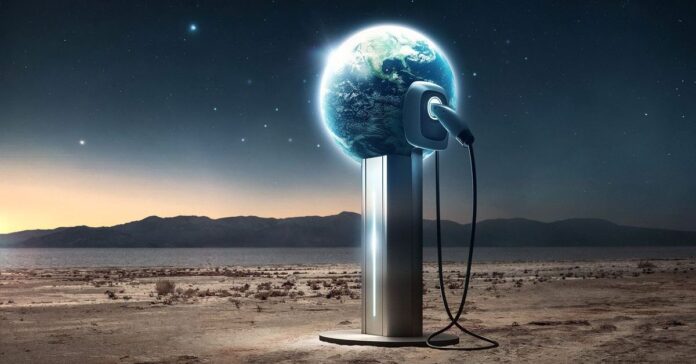Construction of the first dedicated, large-scale lithium extraction and renewable geothermal facility in the Salton Sea area began in 2024.
Yet Liu offers a caveat: “The Salton Sea has a lot of other heavy metals in it, and getting lithium out versus getting out lithium that’s useful are two completely different things,” he says. “Extracting something that’s pure enough, free of contaminants, suitable for battery use and for it to make economic sense — those are different questions altogether.”
Mass production
Domestically, the U.S. currently does not have a way to source all the raw materials for lithium-ion batteries or any commercial manufacturing plants to build the batteries at scale. To do so would involve significant capital investment in physical public infrastructure as well as in training a workforce and building out the necessary facilities.
“The U.S. has a long road ahead as it explores a move toward EV battery manufacturing,” says Liu.
Initial thoughts were that the U.S. could develop battery manufacturing facilities in Imperial County to use the lithium as close to its extraction point as possible. But there are additional energy, water and transportation infrastructure — as well as workforce training — hurdles that have to be overcome before those facilities can be built, explains Isaac Martin, a professor and the chair of the Department of Urban Studies and Planning in the School of Social Sciences. Martin is studying the ability for high-wage, high-skilled blue collar labor to be expanded in the area as a result of the lithium discovery.
Daily driver
Once the raw materials for the batteries are sourced, they are manufactured and installed. Most EV batteries will last at least 10 years.
Yet, one of the widespread criticisms of EVs is that they use electricity that might not be generated by renewable resources. So isn’t using an EV run by, for example, coal-powered electricity just as bad for the environment?
That is not the case at all, answers Liu.
Even if EVs are charged with electricity that is generated by a problematic source, they still offer an environmental benefit.
“Gasoline vehicles are a problem,” says Liu. “Not only are they polluting, they are also polluting in a diffuse fashion because there are so many vehicles dispersing their pollutants as they travel.” A power plant that might be emitting greenhouse gas and pollution, however, is doing so in a concentrated fashion that is likely located in more remote areas, so environmental mitigation and cleanup are easier to manage.
“People who don’t like EVs usually say that if the electricity is dirty, you actually do not save anything,” says Liu. “But that’s not really true — there is still a benefit as well as a potential to utilize clean energy to power them.”
Beyond their eco-friendly advantages, EVs are better equipped to handle the growing computing power needed to operate today’s advanced cars. While gasoline-powered vehicles have alternators that can create the electrical energy needed to operate onboard computers, Liu explains, EVs can easily run the existing computer systems with the capability to operate even more complicated ones as designs evolve. “As you need more and more electric-powered elements in vehicles, particularly in fully autonomous vehicles, electrification is made for it,” says Liu.
Reuse and recycle
Just because an EV might reach the end of its primary use doesn’t mean its battery is dead. According to Liu, after years of easy use, such as short daily commutes, these batteries could have a second life. However, the reuse of EV batteries comes down to economic feasibility. “There are a lot of intuitively good ideas that turn out to be quite costly,” says Liu. Finding a secondary use for an EV battery “sounds like a great idea because the battery isn’t dead, so we should squeeze more out of it,” he says. But “after the battery has serviced the car for, say, eight years, and you take it out, then you have to recertify the battery,” he adds. “It is still good, but is it still safe? You may need to separate the good cells from the bad ones before putting the battery back together.”
But once the EV battery has officially reached the end of its life, what’s next? Well, recycling doesn’t quite look like what you’d expect, but it is possible.
“When these batteries were originally designed, they were not designed to be recycled,” says Liu. “In fact, the lithium-ion battery is probably one of the most difficult batteries to recycle.”
So while recycling is possible, Liu says, the issue is at what economic and environmental cost.


